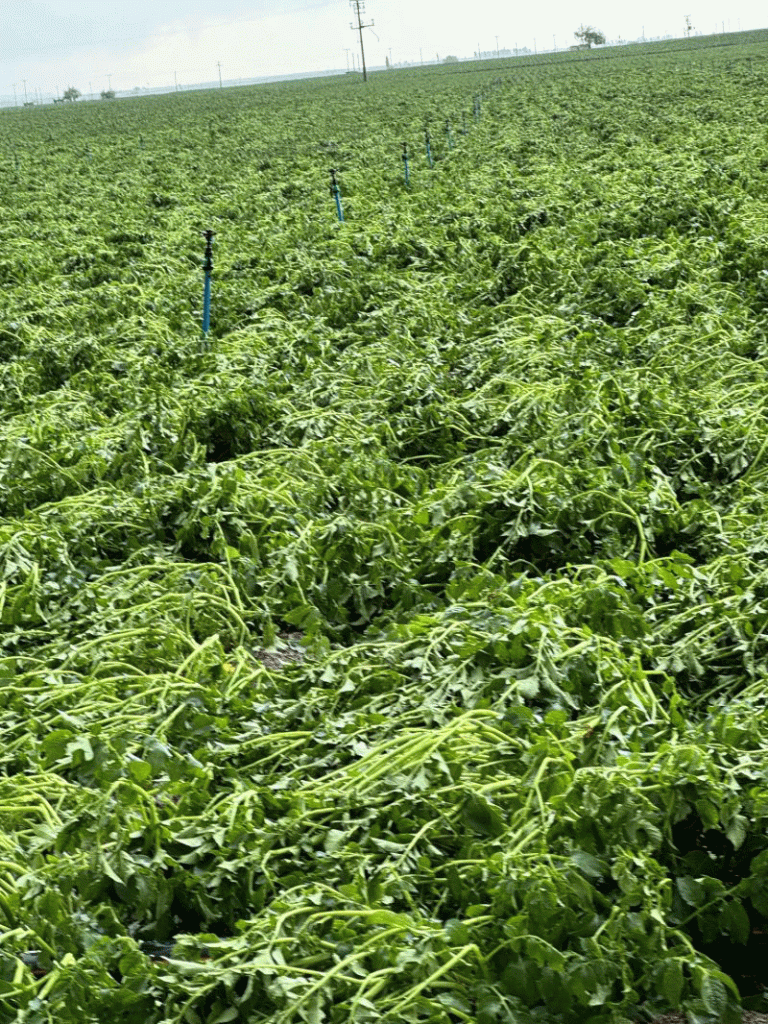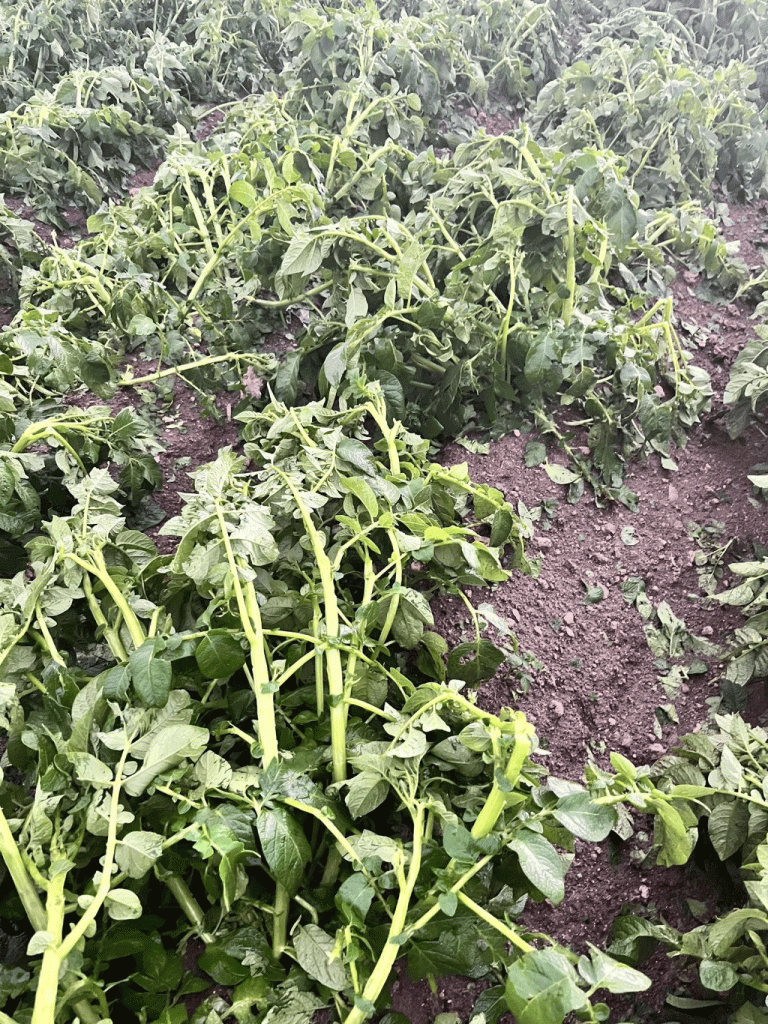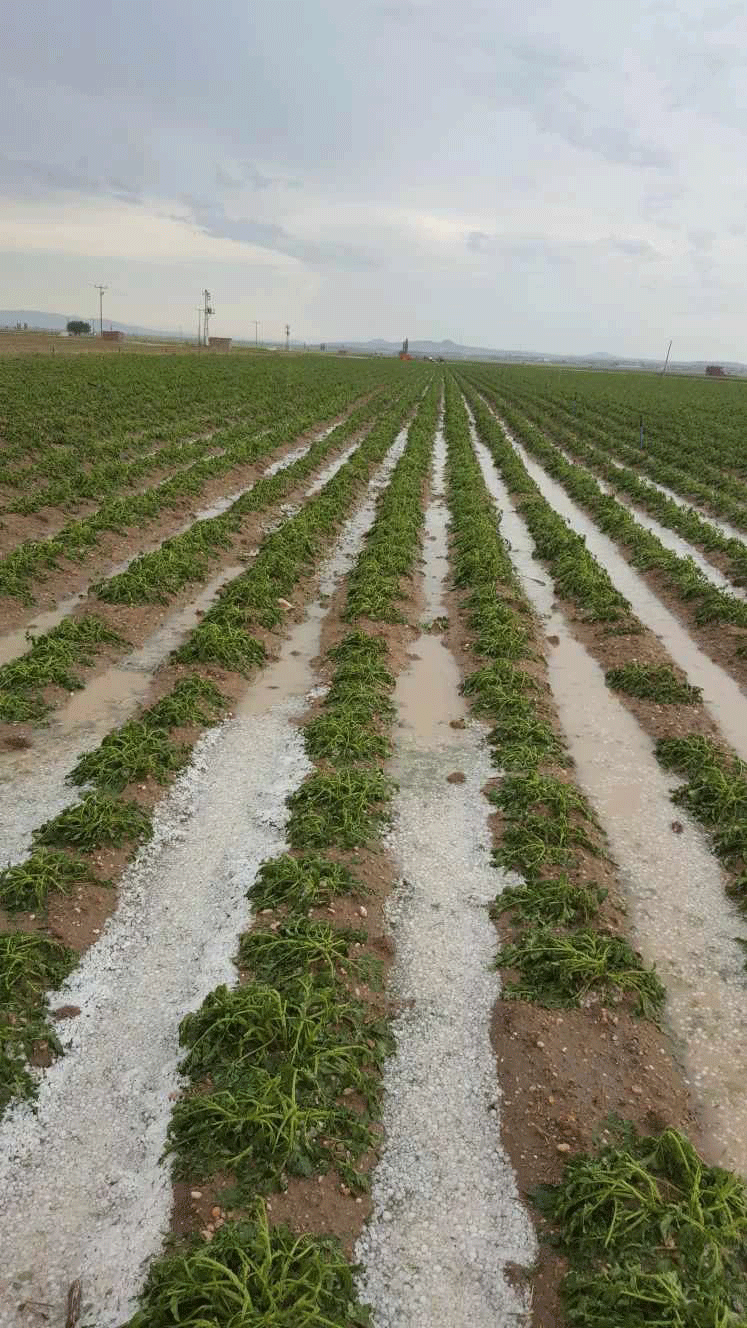Hail can be devastating for farmers, causing varying degrees of damage to crops. The severity of hail damage depends on the size and quantity of hail, the stage of plant growth, the crop variety, subsequent weather conditions, and the remedial measures taken. Immediate and strategic action is critical to mitigate the impact and promote recovery.
Damage assessment
The extent of hail damage can range from minor leaf tearing to severe stem breakage. At worst, hail can damage or split stems, exposing vascular tissue and making plants susceptible to disease. Leaves may appear shredded and stems and branches may turn white. Damaged tissue often appears sandblasted, and plants become prone to infections such as late blight (Alternaria spp.) and white mold (Sclerotinia sclerotiorum). To prevent fungal infections, it is recommended to use protective fungicides and copper-based disinfectants.
Strategies for restoring slightly damaged crops (less than 25% damage) Evaluation and waiting period: Give the plants 3-4 days to recover from the initial shock. Do not water during this period.
Disinfection: Once the plants begin to stand upright, treat open wounds and fractures with a fine-micron copper-based disinfectant.
Application of fungicide: After the tissue begins to heal and form a protective layer, a fungicide containing azoxystrobin is used to prevent fungal infections.
Regular Maintenance: Continue regular watering and fertilizing. Use nitrogen fertilizer, especially urea, to encourage new leaf growth. Supplements such as seaweed extract and amino acids may also aid recovery. Strategies for restoring severely damaged crops (25-50% damage)
Extended recovery period: Severely damaged crops will take longer to recover. Don’t water right away. Wait until the plants begin to stand upright.
Disinfection: Use fine-micron copper-based disinfectants to treat damaged areas.
Application of fungicide: During the next watering, apply fungicides such as Azimuth or Quadris containing azoxystrobin.
Nutrient Management: Maintain regular watering and fertilizing with nitrogen fertilizers. Use balanced NPK fertilizers (eg 20/20/20 or 18/18/18) to ensure rapid absorption of nutrients.
Supportive measures: Provide additional support with supplements such as seaweed extract and amino acids to promote plant health and resilience.
Understanding the Impact on Yields
Hail damage during critical growth stages such as tuber initiation or early tuber formation can significantly impact yield. Stem damage is a major cause of crop loss as it disrupts the transport of water and nutrients. Hail can also cause uneven growth, leading to deformed tubers. Early-season defoliation (less than 25%) is generally tolerable, but late-season defoliation can reduce photosynthetic capacity and result in reduced tuber size.
Effective management of hail-damaged crops requires timely assessment and intervention. By implementing the recovery strategies outlined, farmers can minimize losses and promote healthy crop regrowth. Constant monitoring and proper use of fungicides, disinfectants and fertilizers are essential to overcome problems caused by hail.



